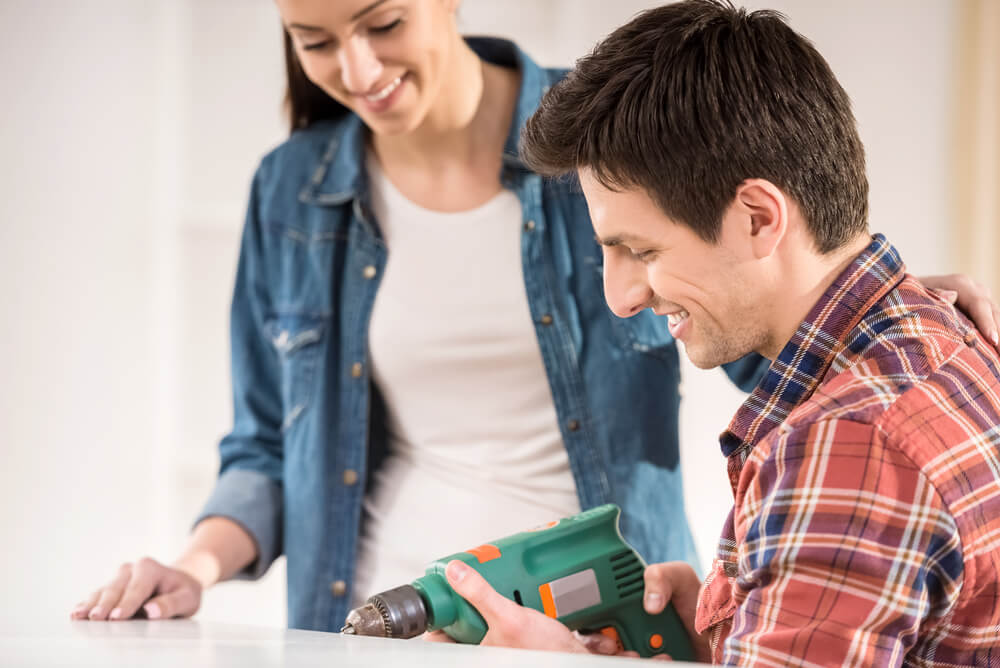10 Ways your Maintenance Team can Improve the Resident Experience
--

How many times do your residents see the leasing staff compared to the maintenance team? Think about it. Before online payments, leasing office staff could count on seeing a resident up to a dozen times a year, at least when the rent was due. Now with conveniences such as resident portals and online leasing, residents are probably venturing to the leasing office far fewer times. Maintenance teams are out in the community working on maintenance issues or repairs. Or, they are seen working in and around apartment buildings, giving a big opportunity for maintenance techs to have face time with residents.
Making the Most of your Maintenance Team
That’s why maintenance team members need to understand their role in the customer experience, says Paul Rhodes National Maintenance and Safety Instructor for the National Apartment Association Education Institute (NAAEI). Because a resident may be more likely to put a face with a community through contact with maintenance personnel, technicians need to be on top of their games at all times.
“Almost every day, residents may see maintenance because they’re doing service requests,” Rhodes says. “It’s important that maintenance personnel have clean uniforms, show confidence and professionalism, and look like they know that they are doing. Maintenance has to understand how they are perceived and their role in the resident experience.”
Rhodes offers 10 ways that maintenance teams can improve the resident experience:

1. Standardize parts and products throughout the property
Streamlining the types of products and parts used throughout each unit of the property will simplify service processes and lead to quicker resolution of maintenance issues and repairs. For example, a property should use the same type of vanity faucet or doorknob throughout the property, and maintenance should always have such items in stock for replacement. Standardizing saves time and money because there are fewer variables when maintenance completes service request, Rhodes says. When the technician arrives with the right part the first time, residents are more confident in maintenance’s ability.
2. Outward appearance will convince residents maintenance is on top of its game
Perception is a reality, whether it’s true or not, says Rhodes. For example, a maintenance tech who looks clean, professional, is wearing a smile but may not be as experienced will connect with a resident rather than a master technician who’s dirty, seems disheveled and is a little agitated. The resident won’t know which is the lesser experienced, but the more professional-looking tech is more likely to gain the resident’s confidence.
3. Train maintenance on better communicating with residents
Maintenance has a larger role in communication with the resident than many realize. It’s important for technicians to communicate in a way with residents so that nobody gets offended, especially when it’s an issue created by resident error. “You want to get information across in way resident doesn’t get offended or be belittled or talked down to,” Rhodes said. “Make sure the maintenance team is getting training in communication.”
4. Educate residents on appliance use through video technology
Rhodes says residents don’t always understand how appliances work and often don’t read the instructions manuals left at move-in. Short videos featuring onsite maintenance technicians that are accessible on mobile devices can educate residents on how to properly operate appliances like ovens, dishwashers, and washing machines. The videos are a great way for residents to connect with Maintenance while also helping reduce service calls.
5. Train maintenance on changing technologies
Just as residents don’t always read the instructions, maintenance techs sometimes look the other way on appliance manuals, Rhodes says. A technician that doesn’t appear to know how to fix a problem is a maintenance disaster, Rhodes says. That’s all the more reason that technicians should receive periodic training, especially since technology changes. “Refrigerators don’t have defrost timers these days,” he says. “They now have a circuit board to advance the cycle. You have to follow the manufacturer’s instructions to force defrosting. It’s run by a computer.”
6. Choose the right time to give residents maintenance-related items
Rhodes says giving residents a repair-related move-in gift is a sure way to put the maintenance team against a wall. “Don’t give out a toilet plunger as a move-in gift,” he says. “Let’s think it through… you have a resident move in, they pay rent and they are greeted in the bathroom by a toilet plunger. That’s like buying a car with 100,000-mile warranty, but you open the trunk and it’s full of tools. How much confidence in the plumbing does this brand new resident have?” Giving the gift of a plunger can be done by the maintenance team after they’ve used a new plunger to clear the lines on a service call. “In this way the resident knows that the toilet works, and maintenance will respond if there is a problem.”
7. Good communication between office, resident will assist Maintenance
Educate office staff about the information that maintenance needs on a service request. Rhodes says the office needs to know the difference between a dripping faucet and leaking faucet, and be able to convey that to the maintenance team before the service call. He recommends arming staff with cue cards that can be used to ask questions and get detailed information from residents when they call for service. “It’s teaching the right language for office staff to use,” Rhodes says. “The cards are written in maintenance’s own words so that maintenance gets a complete description of the problem.”
8. Cross-train the front office on how maintenance does its job
Invite office staff members to spend a full, normal day shadowing a maintenance technician. That, Rhodes says, will help leasing associates and administrative assistants who are likely to field maintenance calls a better understanding of what the technician needs to do the job right the first time. If a technician has to return to the job because he or she doesn’t have the right information and tools, resident confidence in management’s ability to resolve issues may be shaken, Rhodes said. By the same token, spending a normal day in the office can help a technician with understanding life as a leasing professional.

If a technician has to return to the job because he or she doesn’t have the right information and tools, resident confidence in management’s ability to resolve issues may be shaken, Rhodes said. By the same token, spending a normal day in the office can help a technician with understanding life as a leasing professional.
9. Provide social setting for maintenance and residents
A maintenance social is a great way to let residents mingle with technicians in a casual atmosphere. Rhodes encourages management to put spatulas in their tech’s hands and host a hamburger or hot dog cookout during the outdoor season. “Make it maintenance-themed so that your residents see maintenance techs as human beings, and maintenance techs see the same in residents,” he said. Consider having an agenda, and include topics like most common service requests and tips residents can use to help their apartments run more efficiently.
10. Enhanced onsite communication leads to successful maintenance
Host regular team meetings with the office staff so that everybody is always on the same page. “Let the maintenance department talk about what’s going on in their world and the office talk about what’s going on in their world,” Rhodes said. “It can’t be about whining.” Understanding issues that face each group will help improve communication with residents and resolve problems faster, Rhodes says.
Maintenance teams should know their role in the customer experience. Quite frankly, they can be perceived as the face of the company.